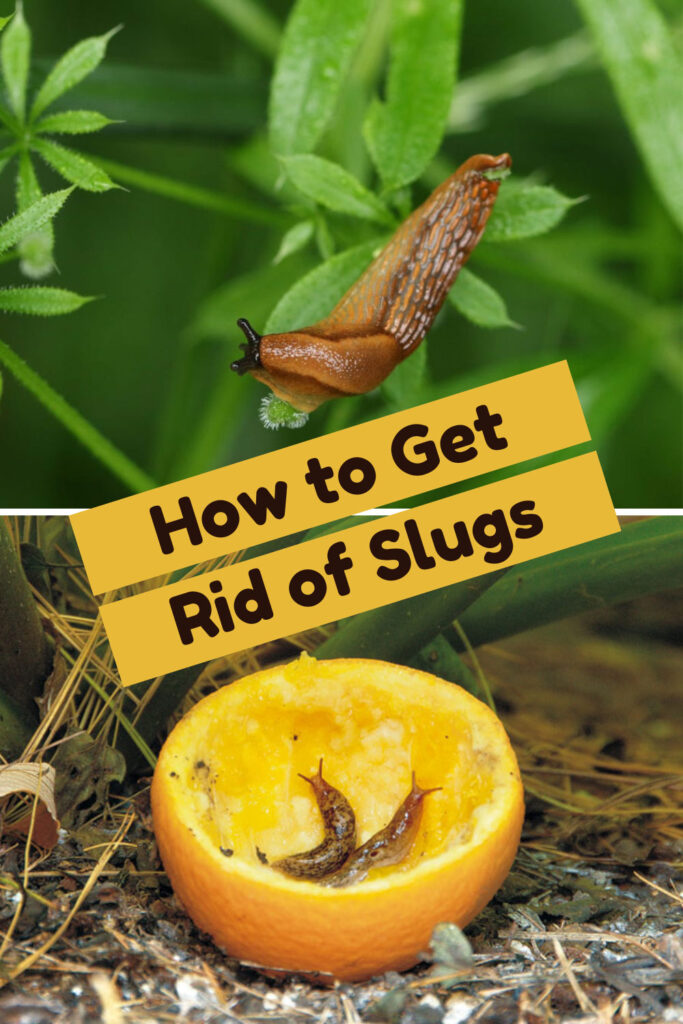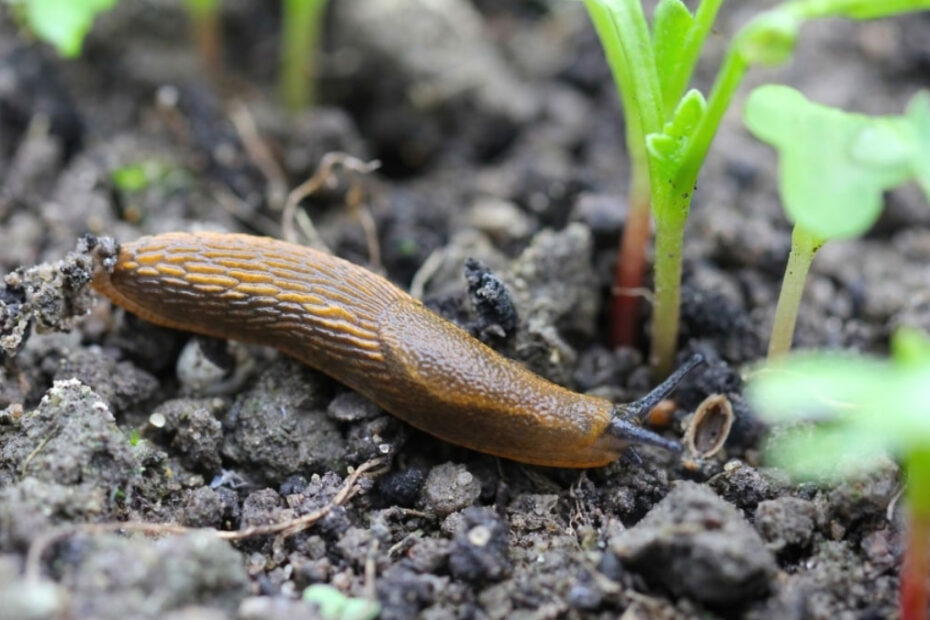Slugs can wreak havoc on your garden, turning your beautiful plants into a buffet. These slimy pests are not only unsightly but also incredibly destructive, munching through leaves, stems, and even roots. If you’re tired of seeing your hard work devoured overnight, it’s time to take action.
You don’t need to resort to harsh chemicals to keep slugs at bay. There are plenty of effective, eco-friendly methods to protect your garden and reclaim your green space. In this guide, you’ll discover practical tips and tricks to get rid of slugs once and for all, ensuring your plants thrive without unwanted guests.
Key Takeaways
- Understanding Slugs: Knowing the habits and habitats of slugs helps in creating targeted strategies to manage their population in your garden effectively.
- Preventative Measures: Regular garden maintenance and inviting natural predators can significantly reduce slug activity without the need for harsh chemicals.
- Chemical Solutions: Slug pellets and home remedies like salt, ammonia, and vinegar can be used as targeted solutions to control slug populations, but should be applied with caution to minimize risks to other wildlife.
- Natural and Organic Methods: Utilizing barriers and traps, along with planting slug-repellent or predator-attracting plants, promotes a healthy garden ecosystem while keeping slugs at bay.
- Long-Term Strategies: Practices like soil management and crop rotation create an unfavorable environment for slugs, offering sustainable, long-term protection for your garden.

Understanding Slugs
Understanding slugs helps in managing their impact on gardens. These pests are known for damaging plants, but you can effectively control them.
Characteristics Of Slugs
Slugs, belonging to the mollusk category, exhibit unique features:
- Soft, Elongated Bodies: Slugs lack shells, making them appear different from snails.
- Mucus Secretion: They produce mucus that aids movement and prevents dehydration.
- Tentacles: Two pairs of tentacles feature on their heads; the upper pair hosts eyes while the lower pair functions as sensory organs.
Common Habitats
Slugs thrive in environments that ensure survival and reproduction:
- Moist Areas: You’ll find them in damp garden beds and under mulches where moisture is retained.
- Shade: They prefer shaded spots away from direct sunlight, often under rocks, logs, and dense foliage.
- Organic Matter: Slugs are drawn to decomposing plant material, which provides food and shelter.
By understanding these characteristics and habitats, you can carry out targeted strategies to manage slug populations in your garden effectively.
Preventative Measures
Preventing slugs from invading your garden requires proactive steps. Adopting effective strategies can ensure your plants stay healthy and vibrant.
Garden Maintenance
Regular garden upkeep significantly reduces slug activity. Implementing these practices can help:
- Remove Debris: Clear fallen leaves, dead plants, and organic materials where slugs might hide.
- Prune and Trim: Keep plants well-trimmed and remove dense foliage that creates shaded, moist environments.
- Watering Schedule: Water plants in the morning to allow the garden soil to dry by evening, making it less attractive to slugs.
- Mulching: Use coarse mulch like gravel or bark, which can deter slugs due to its rough texture.
Natural Predators
Introducing natural predators into your garden can provide a sustainable slug control solution. Key allies include:
- Birds: Encouraging birds by offering birdhouses and feeders can help reduce slug populations.
- Frogs and Toads: Creating a small pond or providing moist hiding spots can attract these amphibians, which feed on slugs.
- Ground Beetles: These insects are effective slug predators and can thrive in undisturbed garden areas with plant cover.
- Ducks and Chickens: If feasible, letting ducks or chickens roam your garden can help as they consume slugs.
Using these practical measures supports a balanced garden ecosystem, minimizing the need for chemical interventions. The focus remains on establishing a healthy environment that naturally deters slugs and promotes plant growth.
Chemical Solutions
Chemical solutions offer an effective way to control slug populations if eco-friendly methods are not sufficient. Though some gardeners prefer non-toxic strategies, sometimes using chemical solutions becomes necessary to protect plants.
Slug Pellets
Slug pellets are a common method for controlling slugs in gardens. They contain active ingredients such as metaldehyde or ferric phosphate, which are toxic to slugs.
Metaldehyde:
- Active ingredient in traditional slug pellets.
- Effective in dehydrating slugs, leading to their death.
Ferric Phosphate:
- Considered safer for pets and wildlife.
- Causes slugs to stop feeding and eventually die.
To apply slug pellets effectively:
- Disperse them evenly around affected plants.
- Reapply after heavy rain for continued protection.
- Follow manufacturer instructions for safe usage.
Precaution: Always use slug pellets according to the packaging to minimize risks to other wildlife and pets.
Home Remedies
If you’re hesitant to use commercial chemicals, a few home remedies can work as alternative solutions:
Salt:
- Effective in dehydrating slugs.
- Sprinkle directly on slugs for immediate results.
Ammonia Solution:
- Mix one part ammonia with six parts water.
- Spray directly on slugs in early morning or late evening.
Vinegar:
- Mix equal parts vinegar and water.
- Spray on slugs and slug-prone areas.
These remedies offer targeted solutions, but consistent application may be necessary to keep slug populations under control.
By exploring both chemical and home-based solutions, you can find the most effective method to protect your garden from slugs. Always consider safety and environmental impact when choosing chemical interventions.
Natural and Organic Methods
When tackling slugs in your garden, consider natural and organic methods. These eco-friendly strategies avoid harsh chemicals and maintain garden health.
Barriers and Traps
Setting up physical barriers and traps can effectively prevent slugs from damaging your plants.
Barriers
- Copper Tape: Place copper tape around pots. Slugs avoid contact with copper, making it a practical deterrent.
- Gravel and Eggshells: Surround plants with a layer of crushed gravel or eggshells. The rough texture deters slugs from crossing these abrasive materials.
- Diatomaceous Earth: Sprinkle diatomaceous earth around the garden. This powder dehydrates slugs upon contact, reducing their population.
Traps
- Beer Traps: Dig small holes and place shallow containers filled with beer. Slugs are attracted to the yeast scent, fall in, and drown.
- Grapefruit Halves: Lay grapefruit halves, flesh side down, in your garden. Slugs seek shelter underneath them. You can then collect and remove the slugs daily.
- Wood Boards: Place wood boards in the garden. Slugs hide under the boards during the day, allowing you to collect and remove them easily.
Beneficial Plants
Incorporate specific plants that repel slugs or attract their predators to your garden.
- Mint: Planting mint can deter slugs with its strong scent. Keep in mind that mint can be invasive, so it’s best grown in containers.
- Rosemary: This aromatic herb repels slugs while adding a versatile culinary plant to your garden.
- Fennel: Fennel can attract predatory insects like ground beetles, aiding in slug control.
- Nasturtiums: These flowers can act as a trap crop. Slugs prefer them over other plants, diverting attention from your main crops.
Incorporate these natural and organic methods to create a balanced ecosystem in your garden. These strategies can minimize slug damage while promoting a healthy environment.
Long-Term Strategies
Successfully managing slug populations in your garden requires implementing long-term strategies. By using these methods, you can reduce slug damage over time and create a healthier environment.
Soil Management
Proper soil management can deter slugs by making the environment less hospitable.
- Improve Drainage: Ensure your soil has good drainage. Slugs thrive in moist conditions, so improving drainage can reduce slug populations. Use organic matter, like compost, to enhance soil structure.
- Soil pH: Maintain a slightly alkaline soil pH. Slugs prefer acidic conditions, so adding lime can make the soil less appealing.
- Organic Matter: Incorporate well-decomposed organic matter. Fresh organic material attracts slugs, so use composted material instead.
Crop Rotation
Crop rotation disrupts the habitat and food sources slugs rely on.
- Rotate Crops: Change the type of crops grown in a particular area annually. This practice prevents slugs from establishing in one spot.
- Include Resistant Plants: Integrate plants less susceptible to slugs into your rotation. Examples include garlic, onions, and fennel.
- Companion Planting: Use plants that repel slugs or attract natural predators. Pair plants like mint or rosemary with vulnerable crops.
Employ these long-term strategies for a healthier, slug-resistant garden.
Conclusion
By understanding the habits and characteristics of slugs, you can carry out effective strategies to protect your garden. Eco-friendly methods, such as introducing natural predators and using physical barriers, offer sustainable solutions without harming the environment. For those times when chemicals are necessary, ensure you follow guidelines to minimize any negative impact.
Regular garden maintenance and preventative measures play a crucial role in keeping slugs at bay. Incorporating long-term strategies like soil management and crop rotation will further enhance your garden’s resilience. With these comprehensive approaches, you’re well-equipped to maintain a healthy, thriving garden free from slug damage.
Frequently Asked Questions
What are common signs of slug infestation in gardens?
Slime trails, irregular holes in leaves, and chewed edges on plants are common signs of slug infestation. Slugs are usually most active during damp and cool conditions, particularly at night.
How can I prevent slugs from entering my garden?
Maintain regular garden upkeep by removing debris, pruning plants, adjusting watering schedules, and applying coarse mulch. Introduce natural predators like birds, frogs, and ground beetles to create a balanced ecosystem.
Are there any eco-friendly methods to control slugs?
Yes, you can use physical barriers like copper tape, crushed eggshells, diatomaceous earth, and traps like beer or grapefruit traps. Incorporate plants like mint and rosemary to repel slugs naturally.
What natural predators can help control slugs?
Birds, frogs, toads, ground beetles, ducks, and chickens are natural predators that can help keep slug populations in check.
Are chemical solutions effective in managing slug populations?
Chemical solutions like slug pellets containing metaldehyde or ferric phosphate can be effective. Follow application guidelines carefully. Home remedies like salt, ammonia solution, and vinegar can also be used for targeted control.
How do I use slug pellets safely?
Apply slug pellets according to the manufacturer’s instructions, usually by scattering them sparingly around affected plants. Ensure pets and wildlife are kept away from treated areas.
What are some effective home remedies for slug control?
Home remedies include using salt, ammonia solutions, or vinegar. These should be applied directly to slugs. Consistent application may be necessary for effective control.
Can certain plants help in repelling slugs?
Yes, plants like mint, rosemary, fennel, and nasturtiums can repel slugs. Incorporating these into your garden can help manage slug populations naturally.
How do physical barriers help in slug control?
Physical barriers like copper tape, crushed gravel, and diatomaceous earth create uncomfortable surfaces for slugs, preventing them from reaching plants.
What long-term strategies can be employed for slug management?
Improve soil drainage, maintain slightly alkaline soil pH, and incorporate well-decomposed organic matter. Rotate crops annually and use resistant plants and companion planting to create a slug-resistant garden.
